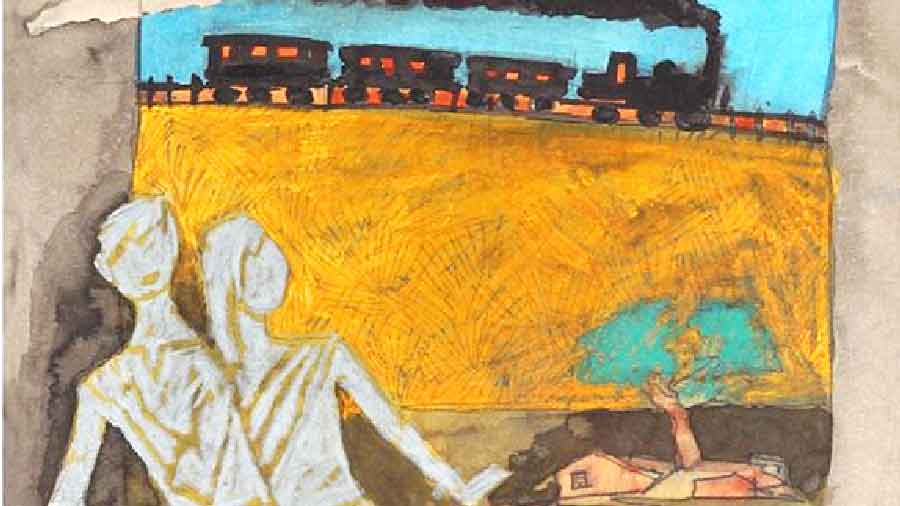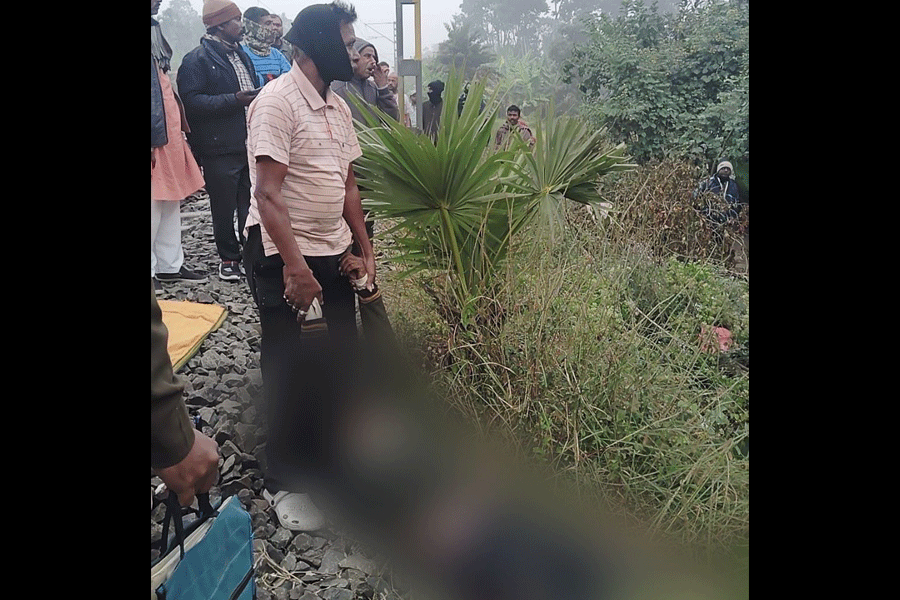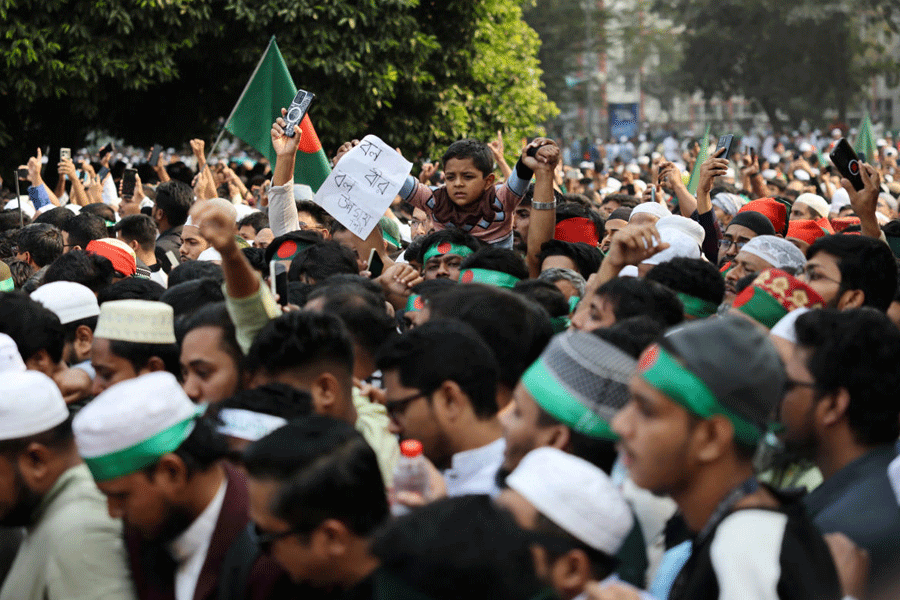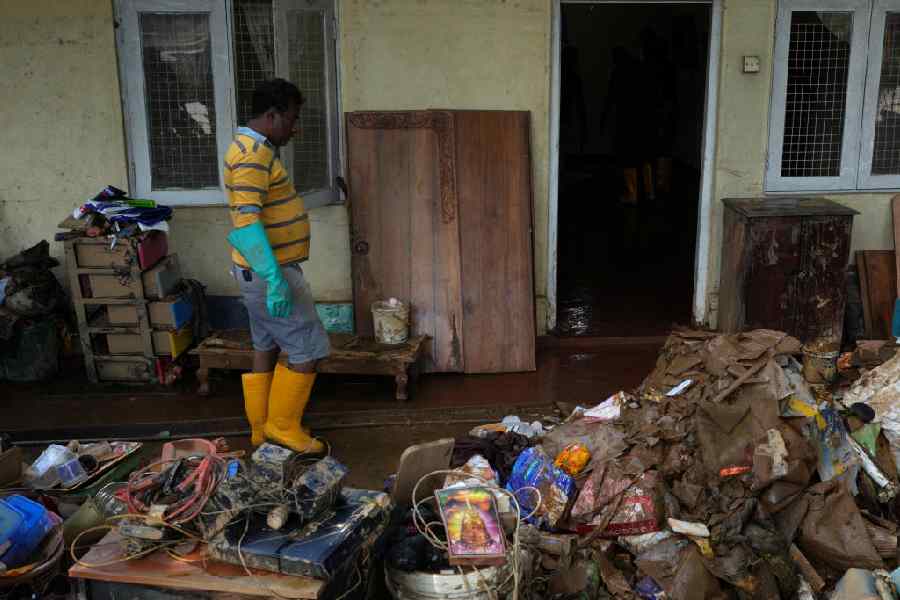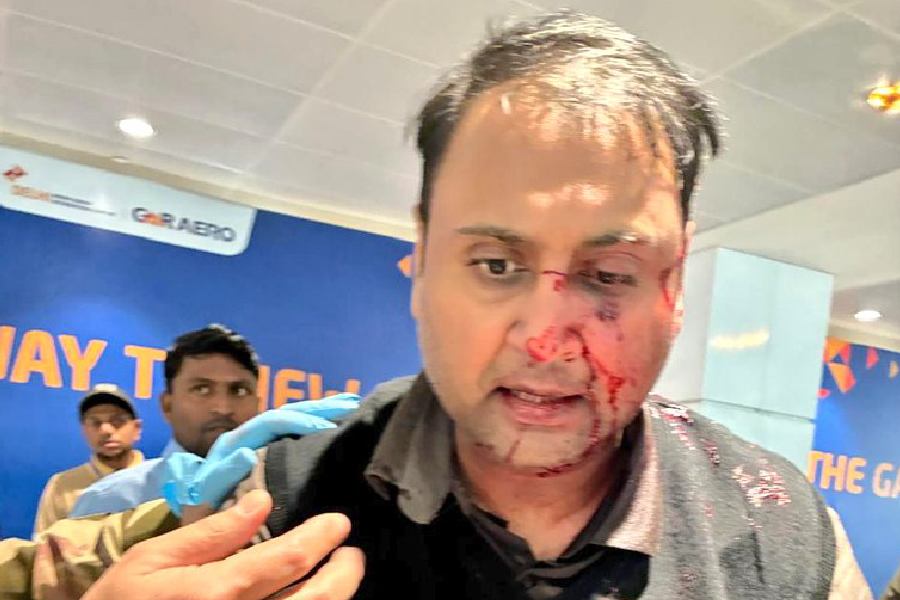Colours of Freedom — an exhibition marking the the75th anniversary of Indian Independence at CIMA (the show will be on view at the gallery till July 30) — begins with clippings from Pather Panchali projected on a large wall facing the entrance, setting the tone of realism and humanism that shaped modern art and its proponents in sovereign India.
Flanking this projection are Satyajit Ray’s directorial sketches and M.F. Husain’s take on the film, capturing in deceptively simple shapes the childish wonder of Apuand Durga when they first spot atrain (picture). On the wall to the left of this projection stands Bikash Bhattacharjee’s Wounded Family, mirroring the harsh poverty of Ray’svision.
While Somnath Hore in Wound -2, protesting the man-made famine of 1943, and Tyeb Mehta, in his sculpture of the gnarly remains of an animal skull, refuse to soften the blow of truth, N.S. Bendre conjures up a pointillist idyll and the frail faces and huge eyes of Sanat Kar’s sprite-like creatures capture humans at their most vulnerable. The hidden face in Bhupen Khakhar’s work reveals layers of identity and emotions whereas the bust in F.N. Souza’spainting holds the audience’s gaze but gives nothing away. Meanwhile, there is a mysterious twinkle in the eyes of the chiselled face in LaluPrasad Shaw’s canvas, which seems to be mildly amused by all that goes on around him.
The Matissean playfulness and colour of K.G.Subramanyan’s Interior is cleverly contrasted with the monochrome chiaroscuro of Haren Das’s Shop at Night. Bronze turns pliant in the hands of Meera Mukherjee who carves a Ganga in flux, carrying flotsam and jetsam of anything in its way.
Himmat Shah’s spry sketches and lines, too, are fluid and malleable, taking the shape of the viewer’s imagination. Meaning also shapeshifts Dashrath Patel, Sarbari Roy Chowdhury and Jeram Patel, while Manjit Bawa, Paramjit Singh, Paresh Maity and Shreyasi Chatterjee evoke a sense of calm with their landscapes and portraits in various media that offer relief from the unrelenting onslaught of reality. But the viewer is plunged right back into the thick of things with open Chowdhury’s chilling portrayal of death’s inertness, Yusuf’s lament at the earth being hollowed out by human greed, PrabhakarKolte’s vision of a city in flux and R.M. Palaniappan’s reminder of the Sisyphean drudgery of life.
Women take centre stage in the works of Arpita Singh, Swarna Chitrakar, Shakila, Nalini Malani and Ravinder G. Reddy, retelling their stories and opening up about everyday injustices as well as graver violence that is perpetrated on their bodies. The striking juxtaposition of Sumitro Basak’s vibrant canvas that critiques the criminality, corruption and impunity of the rich and Kingshuk Sarkar’s black and white indictment of toxic masculinity is a signature of CIMA’s imaginative curation.
While masters like Ganesh Pyne and S.H. Raza focus on myths and cosmic truths, folk practitioners like Jangarh Singh Shyam and JaidevBaghel bring in the animism synonymous with them. There is anger too. Young, contemporary artists— Harendra Kushwaha, Yogesh P.Naik, Anirban Saha, Jagjeet KumarRai, Soham Gupta, Suman Chandra and Swapnesh Vaigankar — rage at the inequality, oppression, poverty and crimes that plague life in an 'elected autocracy’.

